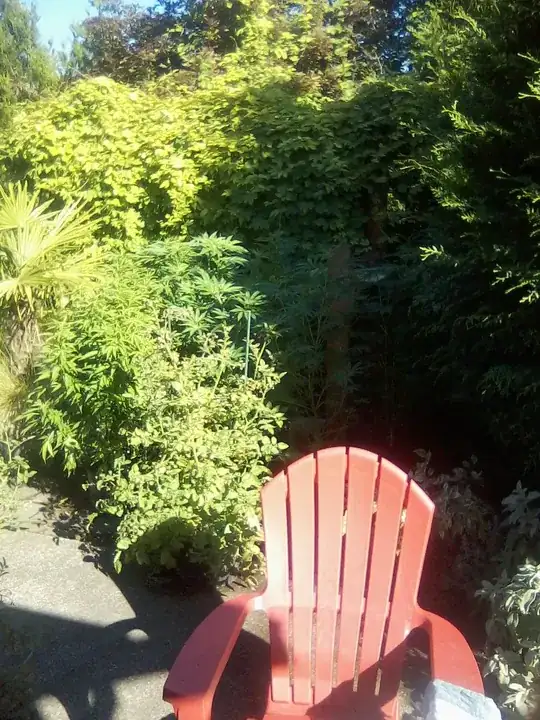There is only one self clinging climbing plant which is evergreen in the UK, and that is Hedera and its varieties. If you choose one, you will need to block off the gaps in the fence to prevent any shoots forcing their way through. It is also likely that Hedera will 'root' into the fence.
There are two other climbing plants which self cling - Hydrangea anomala and Parthenocissus, but they are not evergreen.
All other climbers will require extra support of some kind, such as trellis, clematis mesh or wires, depending on the particular plant's means of attaching itself to a support.
If there's sufficient room at ground level, you might be better off choosing an evergreen, freestanding shrub which prefers to grow against a wall or fence, and which can readily be trained/pruned against it, such as Pyracantha or Garrya elliptica.
UPDATED ANSWER:
You mention evergreen climbing hydrangea - generally, they are not reliably evergreen in the UK and are only just frost hardy, H. anomala being the only one that is totally hardy here.
Decumaria is only just frost hardy in the UK, climbs by means of aerial roots, and will need canes inserted to support those aerial roots - I've only ever seen it trained up a trellis in Cornwall.
Trachelospermum jasminoides is the one that's hardiest in the UK - the one you mention, T. asiaticum, is 'frost hardy' which really means frost tender. It is generally described as a 'self twiner' which is true, but that just means it twines. Left to its own devices, it has a tendency to just twine round itself, so if you want it to cover a large area, training it onto supports is necessary - bit of a slow starter for the first couple of years, but a lovely plant once it's got going, though in exposed situations, it can suffer in a hard winter.
Pileostegia is self clinging, hardy, reaches about 6m, prefers a fair bit of shade, but is said to be very, very slow to get going, which was certainly my experience the one time I planted it - took about 6 years for it to get a foot and a half high, so I've not bothered with it since, specially given it's not even that attractive - fairly similar to H. anomala, which gets going faster, though that plant also requires a fair bit of shade.
In regard to Hedera and its tendency to produce rootlets to stick itself to what its growing up, it will do this on concrete, even if it is new - its Parthenocissus which, whilst having a vaguely similar habit, does not damage new surfaces such as walls and pointing, but may damage older surfaces.
As for what I'd recommend to plug the gaps in your fence, I've no idea, but it seems you'll need to think of something as you're worried about tendrils going through the gaps. It's not a problem I'd have because I'd plant a freestanding, wall hugging shrub or two instead of a climber in this situation. Either that or erect a separate, more attractive fence just in front of the concrete one so you don't see it anyway, if there's no border or room for planting in front.
